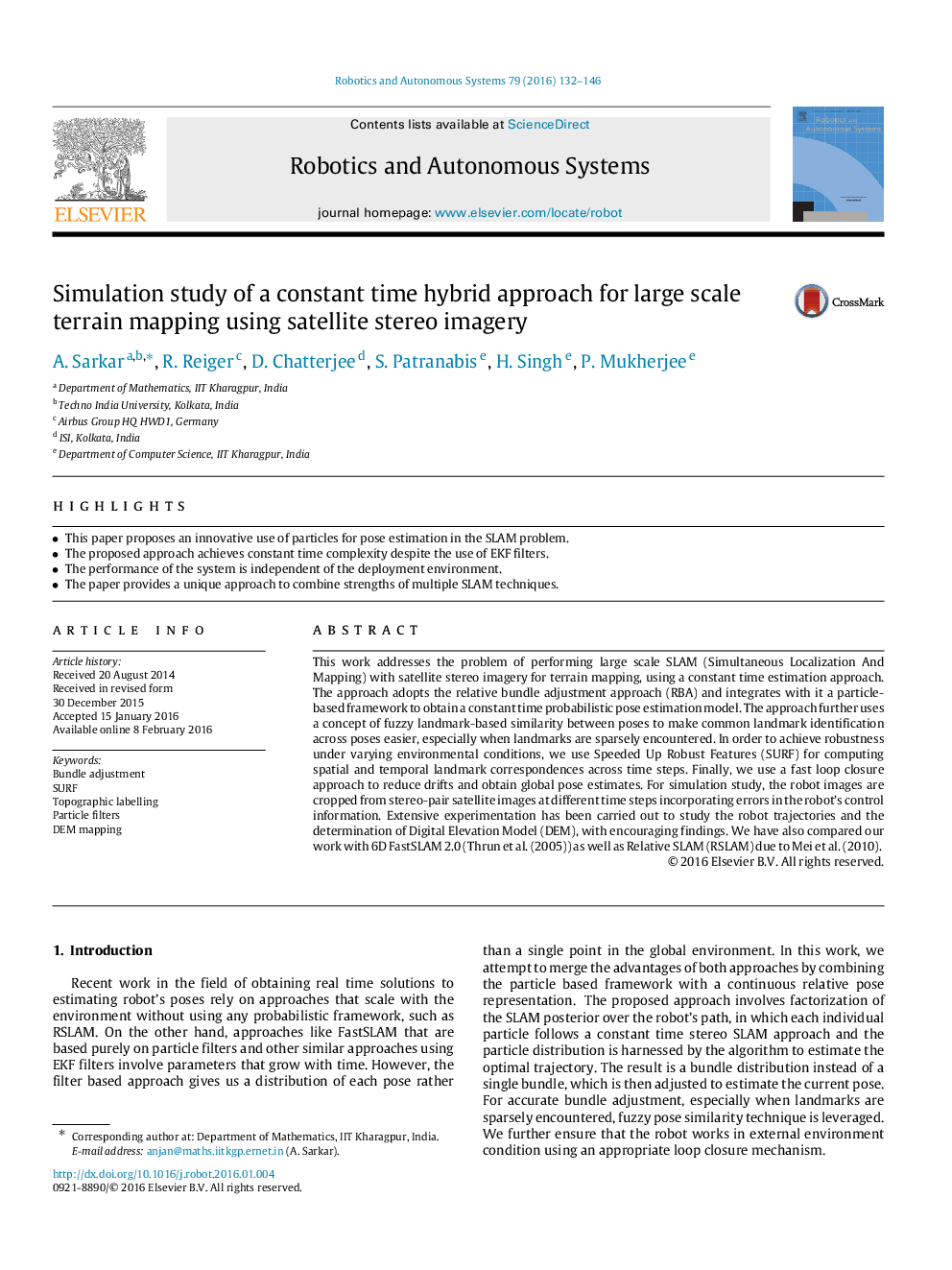| Article ID | Journal | Published Year | Pages | File Type |
|---|---|---|---|---|
| 411259 | Robotics and Autonomous Systems | 2016 | 15 Pages |
•This paper proposes an innovative use of particles for pose estimation in the SLAM problem.•The proposed approach achieves constant time complexity despite the use of EKF filters.•The performance of the system is independent of the deployment environment.•The paper provides a unique approach to combine strengths of multiple SLAM techniques.
This work addresses the problem of performing large scale SLAM (Simultaneous Localization And Mapping) with satellite stereo imagery for terrain mapping, using a constant time estimation approach. The approach adopts the relative bundle adjustment approach (RBA) and integrates with it a particle-based framework to obtain a constant time probabilistic pose estimation model. The approach further uses a concept of fuzzy landmark-based similarity between poses to make common landmark identification across poses easier, especially when landmarks are sparsely encountered. In order to achieve robustness under varying environmental conditions, we use Speeded Up Robust Features (SURF) for computing spatial and temporal landmark correspondences across time steps. Finally, we use a fast loop closure approach to reduce drifts and obtain global pose estimates. For simulation study, the robot images are cropped from stereo-pair satellite images at different time steps incorporating errors in the robot’s control information. Extensive experimentation has been carried out to study the robot trajectories and the determination of Digital Elevation Model (DEM), with encouraging findings. We have also compared our work with 6D FastSLAM 2.0 (Thrun et al. (2005)) as well as Relative SLAM (RSLAM) due to Mei et al. (2010).
